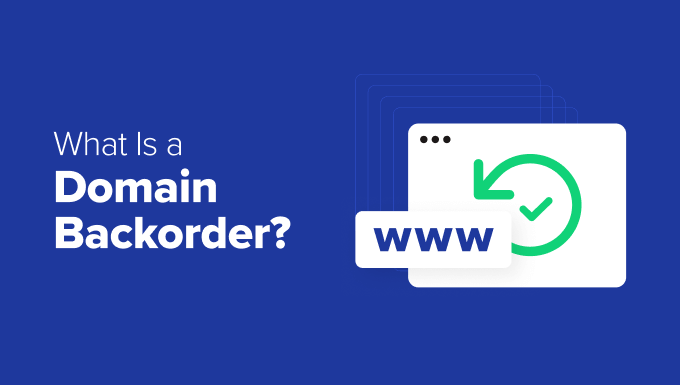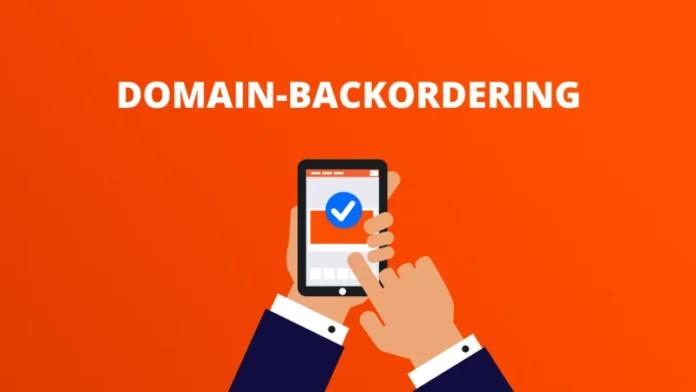Acquiring valuable domain names at optimal prices is key to boosting returns in domain investing. One powerful approach to secure sought-after domains is through the use of backorders.
Understanding Domain Backorders
A domain backorder is a tool that allows buyers to express interest in a domain that’s already registered, in anticipation that it may soon expire. If the current owner doesn’t renew it, the backorder service tries to grab the domain on your behalf—essentially giving you a shot at claiming it before the general public.

What Makes Backorders Valuable:
Acquisition Edge: Backordering increases your chances compared to manually tracking and trying to time a drop.
Automated Tracking: These services monitor the domain’s status and alert you if it becomes available.
Auction Access: If multiple parties backorder the same domain, it typically goes to auction, giving everyone a fair shot.
Why Domain Backorders Matter to Investors
Backorders offer critical advantages for domain investors looking to scale profits:
- Early Advantage: You get the chance to secure domains the moment they drop, beating out casual buyers.
- Lower Competition: Many less-obvious yet valuable domains slip under the radar and can be picked up without much bidding.
- Budget-Friendly: Backorders are often cheaper upfront than competitive auctions or direct purchases, helping investors manage costs while building their portfolios.

Selecting the Best Backorder Service
Choosing the right backorder provider is critical to successfully acquiring expired domains. Not every service has the same effectiveness—some are far better at capturing domains the moment they drop. Here’s what to keep in mind when evaluating your options:
Leading Domain Backorder Platforms:
- GoDaddy: A widely recognized domain registrar with a dependable backorder system tied directly to its auction marketplace.
- DropCatch: Highly efficient at catching dropped domains due to its vast network of registrars, which boosts its capture rate.
- NameJet: Trusted by many domain investors, offering a smooth user experience and competitive auction environment.
- SnapNames: Especially effective for acquiring premium .com domains, making it a go-to for high-end investors.
Market.id: Soon become leading domain backorder platforms.
Key Elements to Evaluate:
- Capture Effectiveness: Investigate each provider’s success rate in securing expiring domains.
- Fee Structure: Look at the cost to place a backorder and potential charges if the domain goes to auction.
- User Feedback: Browse reviews and community discussions to gauge each platform’s reliability.
Maximizing Backorders in Domain Flipping
When used thoughtfully, backorders can be a game-changer in the domain flipping business. Here’s how experienced domainers make the most of them:
Tactical Backordering Tips:
- Scout Expiring Names: Use resources like ExpiredDomains.net to identify domains with commercial or brandable value.
- Double Up on Services: To raise your chances, place backorders across several platforms for the same domain.
- Auction Strategy: If the domain enters a bidding war, stick to a predetermined budget to protect your margins.
With the right strategy and service, backorders can become a powerful tool in building a valuable domain portfolio.
Common Challenges and How to Overcome Them
While backorders can be highly profitable, they come with their set of challenges:
High Competition for Popular Domains
If a domain is highly sought after, it will likely go to auction, driving the price up. To mitigate this:
- Focus on Undervalued Niches: Target domains in less popular industries that may not attract immediate attention but have potential future value.
- Monitor Market Trends: Stay ahead by identifying emerging industries or trends that could increase domain desirability.
Timing Issues
Domains can take days or weeks to drop after expiration due to varying grace periods. To counter this:
- Use Domain Monitoring Tools: Services like DomainTools or WhoisXML API can help track expiration dates and the status of domains.
Tips for Maximizing Profit with Backordered Domains
Here are some actionable tips to enhance profitability when using domain backorders:
- Diversify Your Investments: Don’t put all your resources into a single domain. Spread your investment across multiple backorders to improve your chances of success.
- Evaluate Domain Metrics: Check metrics like domain authority (DA), backlink profile, and search volume using tools such as Ahrefs or Moz before placing a backorder.
- Use Auctions Strategically: If the domain goes to auction, gauge the competition before deciding whether to bid aggressively or pass.
- Leverage Existing Traffic: Domains with existing traffic or backlinks can be flipped at a higher price. Use SEMrush or SimilarWeb to analyze traffic stats before making a purchase.
SEO Optimization Tips for Selling Backordered Domains
When preparing a backordered domain for resale, optimizing it for search engines can increase its perceived value:
- Create a Simple Landing Page: Include keywords relevant to the domain’s niche.
- Leverage Social Proof: Showcase any existing backlinks or mentions in articles that may enhance the domain’s credibility.
- Highlight Domain Metrics: Make sure potential buyers see relevant metrics like DA and monthly organic traffic.
The Future of Backorders in Domain Investing
Domain backorders have evolved into a cornerstone strategy for savvy domain investors looking to secure valuable names at competitive prices. With the right combination of research, timing, and strategic bidding, investors can leverage backorders to build a profitable portfolio.
Final Takeaways:
- Choose Reliable Backorder Services: Opt for reputable platforms with proven track records.
- Stay Informed: Monitor industry trends to identify domains that may become more valuable.
- Diversify Your Approach: Combine backorders with other domain acquisition strategies to enhance your chances of success.
Investing in domain backorders is not just about buying names; it’s about positioning yourself to capitalize on future opportunities. By integrating this strategy into your domain flipping toolkit, you can maximize your ROI and stay ahead in the competitive domain investing market.
This detailed approach not only enhances your knowledge but also sets you on a path to more profitable domain investments.

